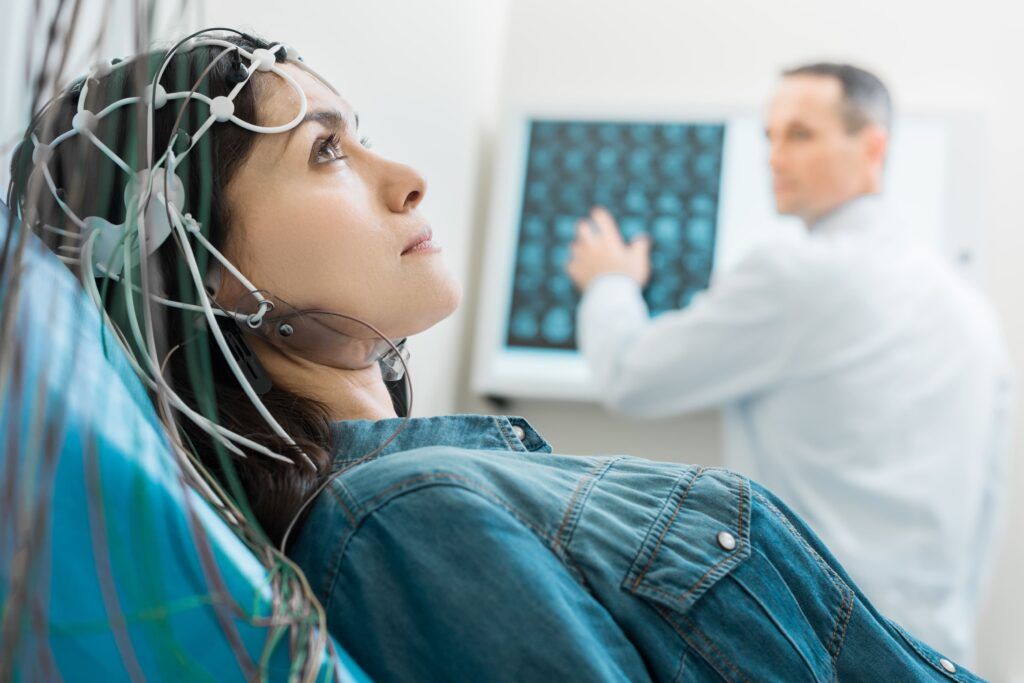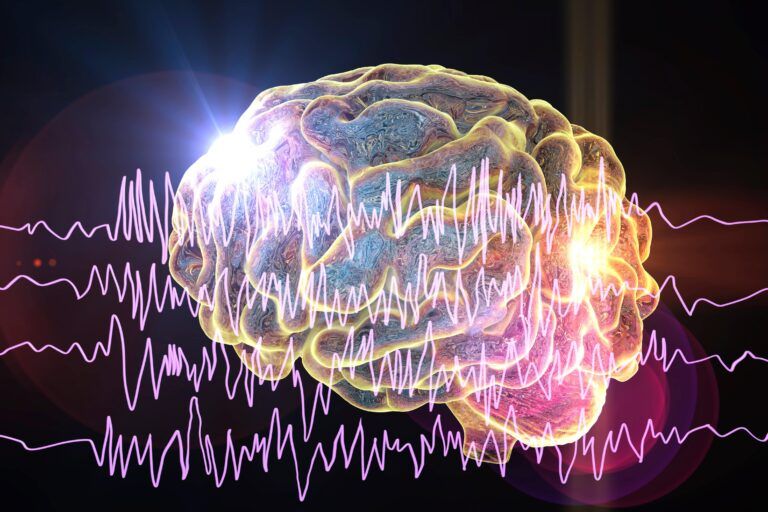Epilepsy, a neurological disorder characterized by recurrent seizures, affects millions of people worldwide. If you or a loved one suspect epilepsy might be a concern, understanding the diagnosis journey is crucial for obtaining proper care and management. In this blog post, we’ll walk you through the essential steps of epilepsy testing and diagnosis, shedding light on the process and what to expect.
Step 1: Recognizing Signs and Symptoms
The first step in the diagnosis journey is recognizing the signs and symptoms of epilepsy. Seizures occur due to abnormal electrical activity in the brain and can vary widely, from subtle changes in awareness to convulsive movements. These episodes may be accompanied by unusual sensations, repetitive movements, or temporary confusion. Keeping a detailed journal of these episodes, including their duration, triggers, and any unusual sensations, can provide valuable information for your healthcare provider.
The symptoms of epilepsy can differ depending on the type of seizure and the area of the brain affected. Here are some common signs and symptoms of epilepsy:
Seizures:
Seizures are the hallmark symptom of epilepsy. They can be broadly categorized into two main types: focal (partial) seizures and generalized seizures.
- Focal (Partial) Seizures: These seizures originate in a specific area of the brain and may or may not involve loss of consciousness.
- Simple Focal Seizures: These seizures don’t cause loss of consciousness. They might involve altered emotions, unusual sensations, or involuntary movements of a specific body part.
- Complex Focal Seizures: These seizures can lead to altered consciousness and a “dreamlike” state. People may engage in repetitive behaviors, wander aimlessly, or become confused.

- Generalized Seizures: These seizures affect both sides of the brain from the beginning and often result in loss of consciousness.
- Tonic-Clonic (Grand Mal) Seizures: These are characterized by intense muscle stiffening (tonic phase) followed by jerking movements (clonic phase). They can be accompanied by loss of consciousness, tongue biting, and urinary incontinence.
- Absence Seizures: Typically seen in children, these seizures cause a brief loss of awareness. The person may appear to be staring into space and may not respond to stimuli.
- Myoclonic Seizures: These involve sudden, brief muscle jerks or twitches, which can affect a small area or the entire body.
- Atonic Seizures: Also known as “drop attacks,” these seizures cause a sudden loss of muscle tone, leading to the person collapsing or dropping their head.
Aura:
Some people with epilepsy experience an aura before a seizure. An aura is a warning sign that can manifest as an odd smell, taste, visual disturbance, or unusual feeling. It serves as an early indicator of an impending seizure.
Automatisms:
During certain types of seizures, individuals may perform automatic, repetitive movements or behaviors, such as lip-smacking, hand-rubbing, or buttoning and unbuttoning clothing.
Loss of Consciousness:
Seizures, especially generalized tonic-clonic seizures, often involve a loss of consciousness. The person may not remember the seizure afterward.
Confusion After Seizure:
Following a seizure, some individuals experience a period of confusion, disorientation, and memory loss, known as the postictal state.
Emotional and Cognitive Changes:
Epilepsy can also affect emotions and cognitive functions. Some individuals may experience mood changes, anxiety, or cognitive difficulties, especially in cases of complex focal seizures that affect the temporal lobe.
It’s important to note that not everyone with epilepsy experiences all of these symptoms, and the severity of symptoms can vary widely. If you or someone you know is experiencing seizures or any concerning symptoms, it’s crucial to seek medical evaluation for an accurate diagnosis and appropriate management.
Step 2: Consultation with a Healthcare Provider
If you suspect epilepsy, your next step is to schedule an appointment with a healthcare provider. This might be a general practitioner or a neurologist specializing in epilepsy. During the appointment, provide a thorough medical history, including any family history of seizures or neurological disorders. Be prepared to describe the frequency, duration, and nature of the seizures you’ve experienced or witnessed.
Step 3: Diagnostic Tests
Diagnosing epilepsy involves a combination of clinical evaluation, medical history assessment, and diagnostic tests. The specific tests used depend on the type of seizures, the patient’s medical history, and the suspected underlying causes. Here are some common diagnostic tests used to diagnose epilepsy:
Electroencephalogram (EEG):

An EEG is one of the most important tools for diagnosing epilepsy. It records the electrical activity of the brain through electrodes placed on the scalp. EEG results can help identify abnormal brain wave patterns that are characteristic of epilepsy and pinpoint the location of seizure activity. Different types of seizures may produce specific EEG patterns.
Video EEG Monitoring:
In some cases, a prolonged period of video EEG monitoring is necessary to capture seizure activity while simultaneously recording the person’s behavior and movements. Video EEG monitoring provides valuable information about the nature and frequency of seizures and can help determine the most appropriate treatment.
MRI (Magnetic Resonance Imaging):
An MRI scan produces detailed images of the brain’s structure, helping to identify structural abnormalities that might be causing seizures. It is particularly useful in cases where a structural lesion or abnormality is suspected, such as tumors, scar tissue from injuries, or developmental abnormalities.
CT (Computed Tomography) Scan:
Similar to an MRI, a CT scan provides detailed images of the brain’s structure. It can help identify any acute structural issues that might be causing seizures, such as bleeding or trauma.
Neuropsychological Testing:
This involves a battery of tests that assess various cognitive functions such as memory, attention, language, and problem-solving. Neuropsychological testing can help determine if seizures are affecting cognitive abilities and provide insights into the specific brain areas involved.
SPECT (Single Photon Emission Computed Tomography) and PET (Positron Emission Tomography) Scans:
These imaging techniques can show blood flow and metabolic activity in the brain. They are often used to locate the specific regions of the brain responsible for generating seizures, known as the epileptogenic zone.
Genetic Testing:
In some cases, genetic testing may be performed to identify specific genetic mutations or abnormalities that contribute to epilepsy. This is especially relevant in cases where epilepsy has a clear familial or genetic component.
Neurological Examination:
A thorough neurological examination is crucial for assessing motor skills, reflexes, coordination, and other aspects of nervous system function. This examination helps determine the overall health of the nervous system and any specific neurological abnormalities.
Blood Tests:
Blood tests can help rule out other medical conditions that may present with symptoms similar to epilepsy. They are particularly important for identifying metabolic or biochemical imbalances that might trigger seizures.
Provocative Testing:
In some cases, provoking seizures under controlled conditions in a medical setting may be necessary to observe and analyze seizure activity. This is typically done in a hospital environment with close medical supervision.
Diagnosing epilepsy is a complex process that requires careful consideration of multiple factors. It’s essential for individuals experiencing seizures or suspected epilepsy to undergo a comprehensive evaluation by healthcare professionals specializing in epilepsy and neurology. This evaluation helps determine the most accurate diagnosis and tailor an appropriate treatment plan.
Step 4: Collaborating with Specialists
Based on the results of these tests, your healthcare provider might refer you to a neurologist with specialized expertise in epilepsy. Neurologists are medical specialists with expertise in diagnosing and treating disorders of the nervous system, including epilepsy. With their specialized knowledge and training, neurologists are equipped to conduct thorough assessments, interpret diagnostic tests such as EEGs and brain imaging, and accurately diagnose the type of epilepsy and its underlying causes. Their in-depth understanding of the complexities of neurological conditions ensures that you receive a comprehensive evaluation and appropriate treatment recommendations tailored to your specific situation. Neurologists can guide you through the diagnostic process, answer your questions, address your concerns, and work with you to develop an effective management plan that aims to improve your quality of life and help you manage your epilepsy effectively. If epilepsy is suspected, consulting a neurologist is a crucial step towards obtaining the right diagnosis, understanding the condition, and receiving the appropriate care and support needed for optimal well-being.
Step 5: Receiving a Diagnosis
After a thorough evaluation of the collected information, your healthcare provider will provide a diagnosis. This diagnosis might include the type of epilepsy you have, its potential causes, and its severity. Having a clear diagnosis is crucial for developing an effective treatment plan.
Step 6: Developing a Treatment Plan
Once diagnosed, you and your healthcare provider will work together to develop a tailored treatment plan. Treatment options may include antiepileptic medications, lifestyle modifications, dietary changes (such as the ketogenic diet), and, in some cases, surgical interventions. The goal is to reduce the frequency and severity of seizures, enhance your quality of life, and minimize any potential side effects of treatment.
In Conclusion
In conclusion, the diagnosis journey for epilepsy involves a series of steps that aim to pinpoint the nature of the disorder, its triggers, and its underlying causes. While the process might seem overwhelming, remember that each step brings you closer to understanding your condition and accessing appropriate care. By collaborating with healthcare professionals, maintaining open communication, and actively participating in your treatment plan, you can effectively manage epilepsy and lead a fulfilling life. Always consult with medical experts for personalized advice tailored to your situation

Dr. Kashouty, a diplomate of the American Board of Psychiatry and Neurology (ABPN), practices general neurology with fellowship trained specialization in clinical neurophysiology. Dr. Kashouty finds the form and function of the nerves and muscles the most interesting part of neurology, which is what led him to specialize in neurophysiology with more emphasis on neuromuscular conditions. He treats all neurological diseases, but his main focus is to treat and manage headaches, movement disorders and neuromuscular diseases.
.




